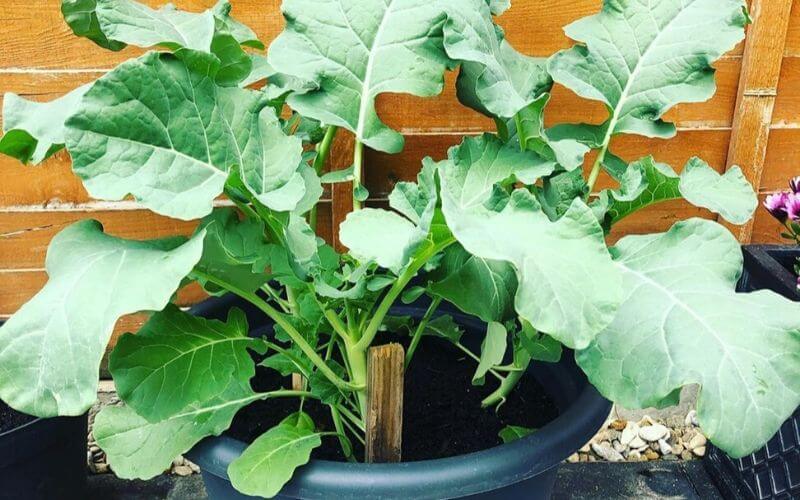
With talk of Victory Gardens and growing your own food, many people would like to grow broccoli. Don’t give up if you do not have space for a garden. You can grow broccoli in containers.
Broccoli is a cool season crop and should be planted a month before the last freeze date in the spring and at least two to three months before the last freeze date in the fall. Broccoli are members of the Cole crop family, with Brussel sprouts, cabbage, and cauliflower.
Want fresh broccoli this year? Start with the tips below and then follow the step-by-step instructions for a bountiful harvest.
Here are five tips for growing broccoli in pots to get you started:
Can you grow broccoli in containers?
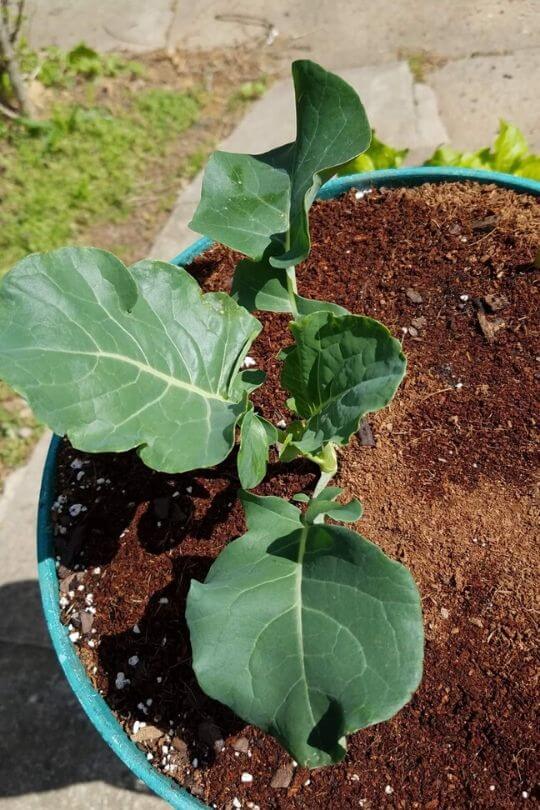
Yes. Growing broccoli in containers is easy when you get a large enough container and keep it watered regularly.
2. Why grow broccoli in containers?
Not everyone has the space for a garden. Growing vegetables in containers can allow you to have fresh vegetables in a small space. Broccoli is an ideal vegetable to grow that way.
3. What Type Of Broccoli Do I Grow?
It varies by region. There are broccoli cultivars for almost any climate. The best way to know which one to plant is to consult your Extension Agent. The cultivars below grow in a wide variety of climates.
Packman (64 Days From Seed)
This broccoli produces solid heads. The side-shoots produce secondary heads for an extended harvest.
Waltham 29 (74 Days From Seed)
These 4”-6” dark blue-green heads grow best in the fall. They are an heirloom plant and were developed to withstand cold. They are well known for their wonderful flavor.
1. Pick the right place for your container to thrive
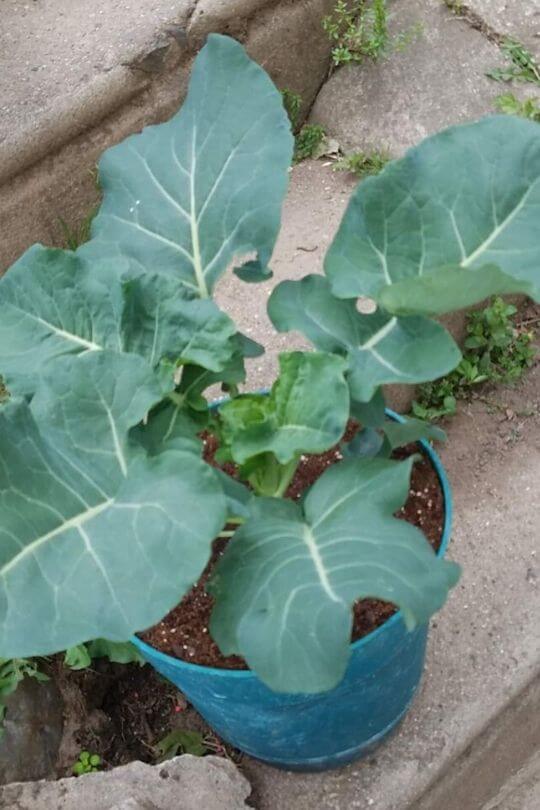
Broccoli need at least six hours of direct sun to thrive. Any less than that, they are weak and spindly. The head is small and lose, instead of being big and tight.
In order to ensure the best results, keep a journal for at least three days and write in it every time you observe the area getting sun. You will also need to write down when the sun is not shining on that spot.
Average the amount of sun the area gets over three days. If it is six or more hours of sun, that spot will support a broccoli plant. If it is not six or more hours, you will have to find another place to put your pot.
2. Picking the container for your plant
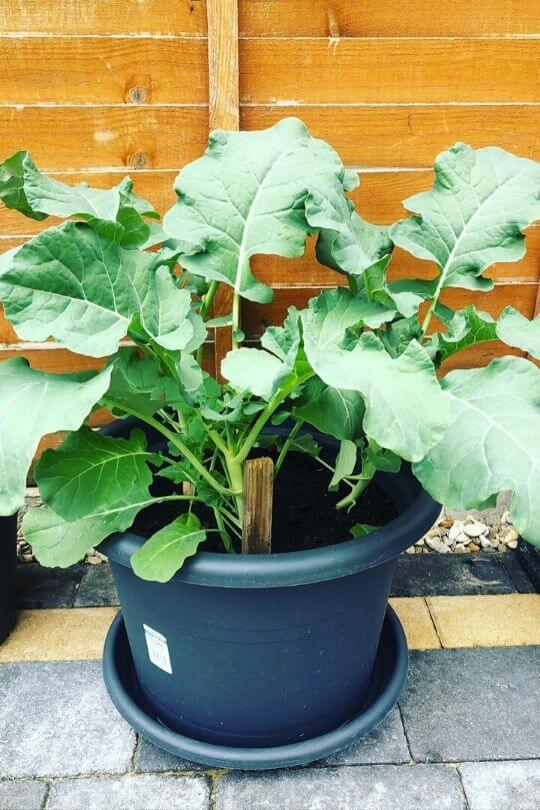
In order for your broccoli to do well, you need a big enough pot. The pot needs to be sturdy and have drain holes on the bottom. It should be at least one foot by one foot and one foot deep. This pot will be very heavy when full of soil and water.
Make sure that the place you are putting it can withstand the weight. Some terraces have weight limits as to how much the terrace can manage before it comes crashing down. Make sure you do not exceed the limit for the area you are placing the pot.
If you move the pot around, I suggest you get a furniture mover to put the pot on. This is a square platform with wheels on it. You just place the pot on the wheels and voila you can roll it around instead of lifting it.
Before using your pot, you need to wash it out several times with a solution of one tablespoon bleach to one gallon of water. Leave the bleach water in the pot for at least thirty minutes.
This will disinfect the pot, so your broccoli does not get a disease or pest from it. Make sure you wash the pot in clean water the final time so you get all the bleach solution out before planting.
Finally, put a thin layer of pebbles in the bottom of the pot so that soil doesn’t clog the drain holes.
2. What potting mix do I use?
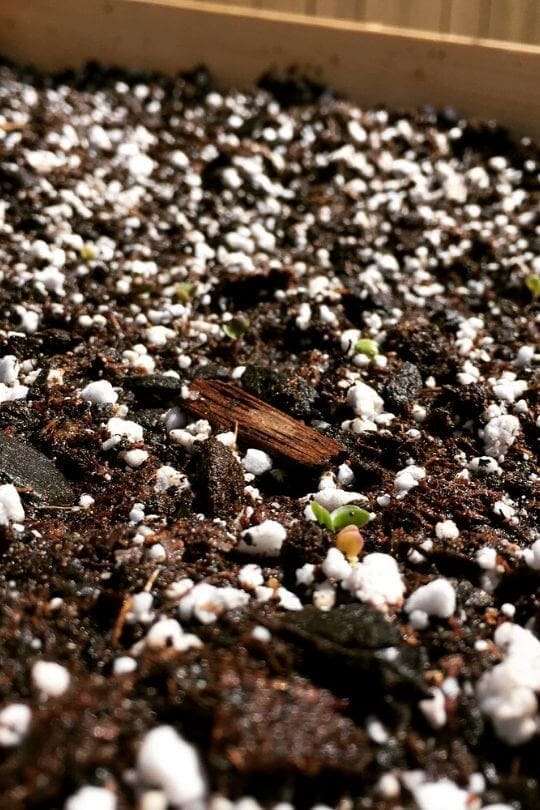
You should always use fresh potting mix when you plant your broccoli. Old potting soil can have pests or diseases in them. You should get a potting mix labeled for vegetables.
A good potting mix has lots of organic matter such as compost to feed the plant while it grows. You will need one cubic yard of the potting mix. It should have a pH of 6-6.5 for your broccoli to thrive.
You should fertilize your potting soil before planting unless the potting mix has fertilizer in it. Too much fertilizer will burn the plant and kill it.
Too little fertilizer will not give the plant the nutrients it needs to make a nice head of broccoli. Be sure to follow the directions on the fertilizer bag.
3. Planting seeds or transplants
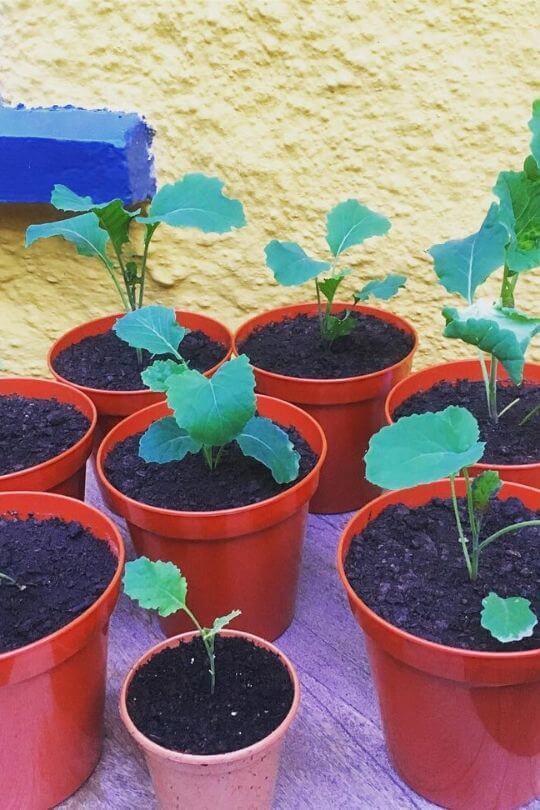
At this point, you must make a decision on whether to plant broccoli seeds in your container or plant a transplant that you bought. The advantage of planting seeds is that you know what has been done to them from the beginning.
If you want to raise your broccoli organically, you can do that. The disadvantage is that it takes longer to grow to the size you want to harvest it at.
If you get a transplant, unless it states it was grown organically, it is probably been grown conventionally. That means it could have been treated with synthetic fertilizer and treated for pests with chemical pesticides.
Some of these pesticides can make your plant dangerous to bees or butterflies that may visit it. You can ask the nursery what has been done to the plant with regards to fertilizer and pesticides.
However, since seed starting is the hardest part of growing something, you have a better chance of getting a good plant with transplants. You also get your broccoli to harvest size faster.
4. Planting your broccoli
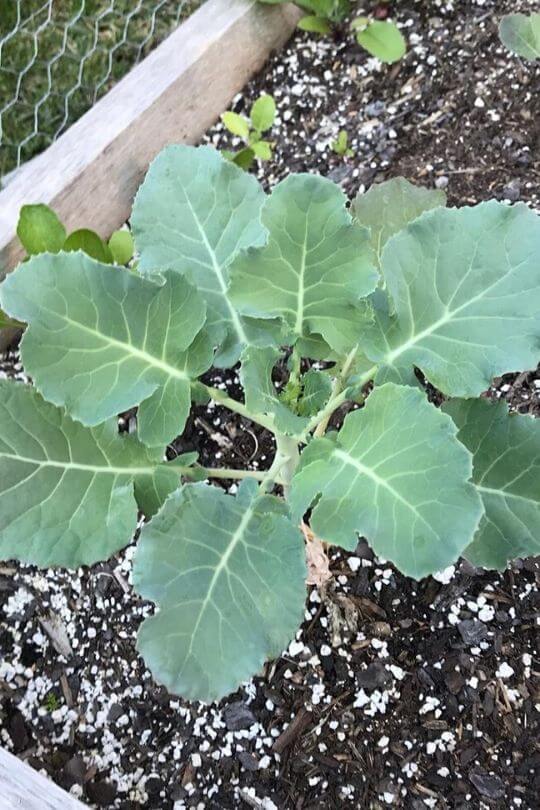
If you decide to plant your broccoli from seeds, you will need to plant three seeds in a hole ½ inch deep. Gently sift a little soil over the hole until it is buried. Do not pat it down or you will make it hard for the seed to germinate.
You will need to gently water the soil until it is damp but not soggy. If you can pick up a handful of soil and squeeze water out of it, that is too wet. When the seeds germinate and have two leaves, pick the strongest one.
Take a pair of scissors and cut the other two plants off at the soil. If you yank the plants, you will injure the strong one.
If you decide to get a transplant, dig a hole in your potting mix that is as deep as the plant and about twice as wide.
Place the plant into the hole so that the plant’s soil is even with the top of the container’s soil.
Fill in the potting mix carefully to make sure you do not damage the plant. Gently water the plant in well.
5. Watering your broccoli
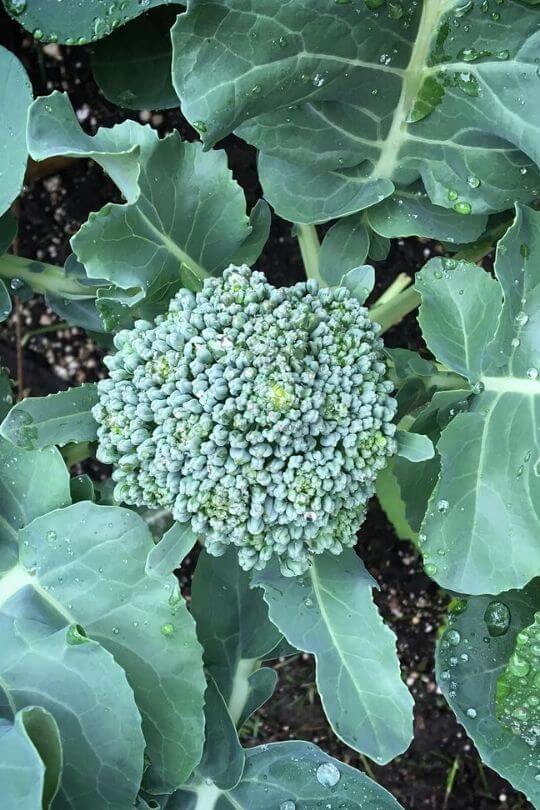
Broccoli plants need a lot of water if they are to produce a good head. Container plants also need a lot of water so they do not dry out. You will need to monitor the dryness of the soil every day.
It is better to water once a day in the morning. That way the plant will never dry out. Do not, however, overwater because that will kill the plant, too.
6. Fertilizing your broccoli
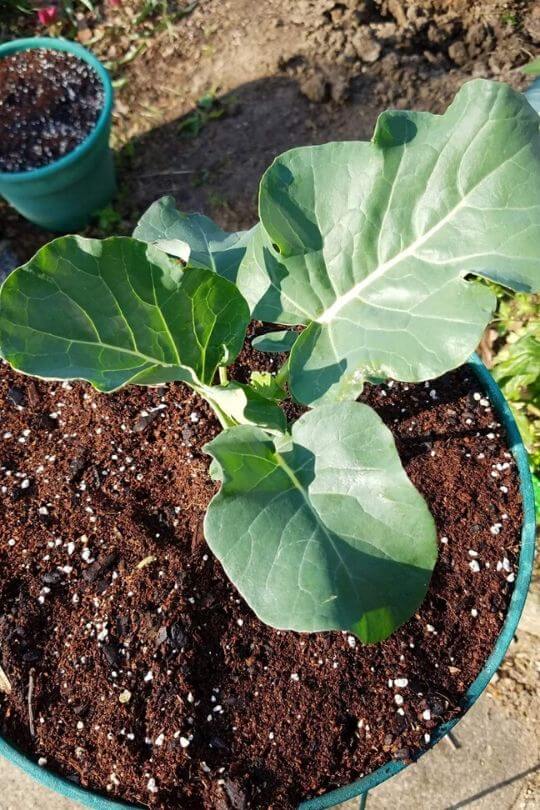
It is necessary to fertilize your broccoli so it can grow a nice head of broccoli. However, too much fertilizer will burn the plant.
If you put too much nitrogen on your plant, it will get very big leaves, but it won’t make a very large head.
The best bet is to buy a balanced fertilizer such as a 10-10-10 intended for vegetables and use that. Be sure to follow the instructions on the container.
7. Mulching for your plants
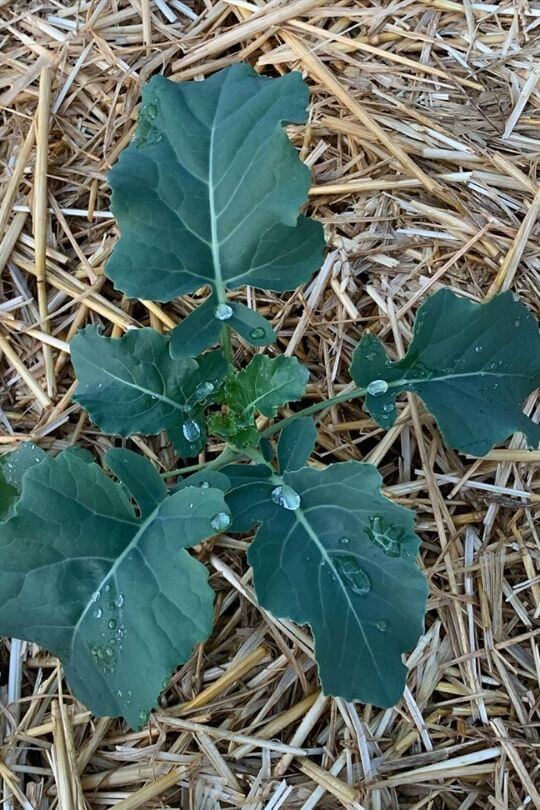
If you are going to keep your plant outside, wild seeds will land in the container and start to grow.
To protect your plant, mulch around it. You will need about 3 inches of mulch all around the plant.
This is enough to stop weed seeds from growing. It also conserves water and keeps the soil temperature down.
Diseases and pests that attack broccoli
Diseases
There are few diseases that attack broccoli. If your broccoli seems ill, you can contact your local Extension agent for help.
Insect Problems

Aphids will eat broccoli and excrete a sticky substance that attracts sooty mold. It is black and will cover the plant, cutting off photosynthesis and starving the plant. Lady bugs eat aphids. You can get packages of Lady bugs or of their eggs. When the larvae hatch, they will kill all the aphids on your plant.
Harlequin bugs are sucking insects that will drain the juices of your plant. This causes the plant to wilt in the areas where it is bitten.
Cabbage loopers are caterpillars that are up to an inch and a half long. They chew big holes in the leaves of the broccoli plant. Cabbage loopers can be picked and dropped into soapy water to die. They can also be sprayed with Bt (Bacillus thuringiensis), which is a bacterial infection that only kills caterpillars, not other bugs.
Imported cabbage worm can grow up to one and a fourth inches. They feed on foliage and can reduce a mature plant to leaf veins and a stalk. They are also know to chew into the broccoli head.
There are stronger measures you can take against pests. However, pesticides come and pesticides go, so we cannot recommend a specific one.
Talk to your Extension Agent for the names of pesticides to kill any pests you come across. Use the least toxic pesticide that will kill your pest. Read the label and follow the directions completely.
Harvesting your broccoli
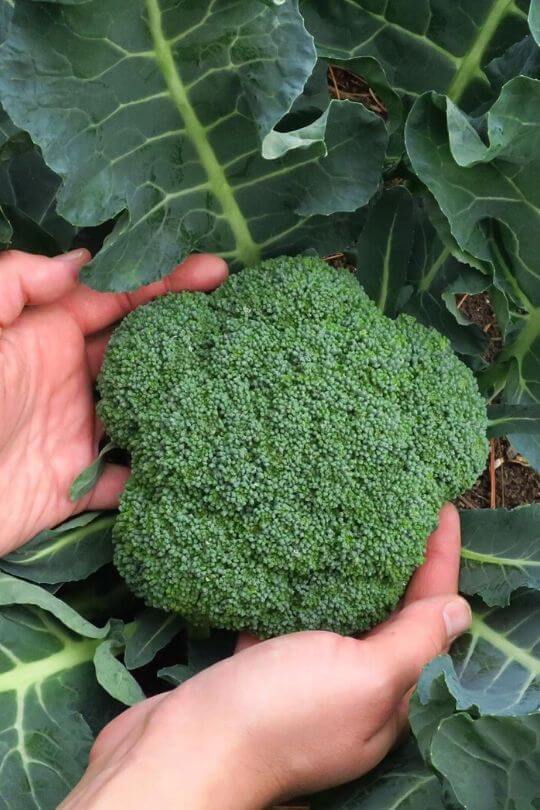
When do you harvest your broccoli for peak taste? When the first yellow bud on the head starts to show, take a knife and cut the broccoli head off. Leave the side shoots on the plant as they often times will grow smaller but edible heads of broccoli.
Cook and enjoy.
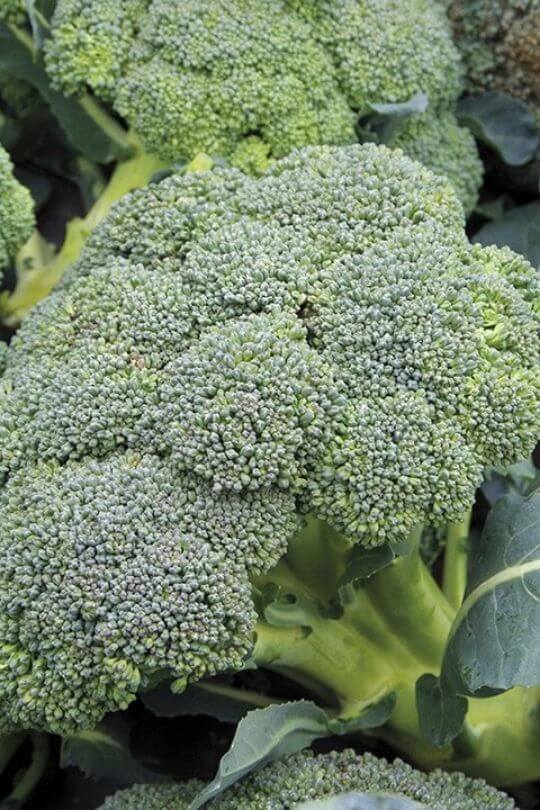
When you cut your broccoli head, wash it to remove any dirt or pests that have gotten on the head. Place in the refrigerator until you are ready to use it. Broccoli can be eaten raw or cooked.
Cut the broccoli off of the stock before eating. Save the stalk for making soup. Steaming or stir frying the little broccoli pieces keeps as many of the vitamins and minerals in the broccoli in the finished dish.
Broccoli has a number of important nutrients in it. It provides fiber, vitamin C, vitamin K, iron, and potassium. A cup of raw broccoli has only 31 calories. It has 2.5 grams of protein, more than most vegetables. Raw broccoli only has 6 grams of carbohydrates and 1.5 grams of sugar. Finally, it has 2.4 grams of fiber and 0.4 grams of fat.
Summary
If you follow these steps growing broccoli in containers is not hard. Make sure the pot is large enough for the plant and has drain holes in it.
Place a thin layer of pebbles on the bottom of the pot before you put soil in it. This will keep the dirt from clogging the drain holes.
Get a blend of potting soil intended for vegetables and fill the pot with the soil. Plant your seeds or transplants and water in well. Water daily or when the soil is dry. Fertilize with an balanced fertilizer intended for vegetables.
Watch for pests and treat in the least toxic way possible. Observe your broccoli grow big enough to harvest. Cut the head off your broccoli plant when the first flower starts to show yellow. Refrigerate promptly and enjoy.

Written By
Stephanie Suesan Smith, Ph.D
Stephanie Suesan Smith, Ph.D. has been a published writer since 1991. She has been writing for the web since 2010. Stephanie has been a master gardener since 2001 and uses her knowledge to write articles on all aspects of gardening. Vegetables, fruit, nuts, and berries are her specialty, but she writes on other gardening topics, too.
